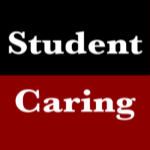Plagiarism is an unfortunately frequent phenomenon in colleges and universities. Educators become used to it and worked out the algorithms for fighting plagiarism with plagiarism checkers and punishing violators. Academic honor codes are written to regulate student activities.
Though educators take measures against plagiarism daily, students still tend to plagiarize. What they often don’t even realize is how plagiarism can ruin their reputation on campus.
Plagiarists are not always vicious violators. Sometimes plagiarism occurs completely by chance or accident. We’ll take a look at accidental plagiarism below, but first let’s take a look at the factors which can impact student success.
What influences student college life?
EDUVENTURES, an independent research firm focused on higher education transformation, prepared a report, according to which factors that influence student success can be subdivided into the following categories:
- Social (community engagement, interactions and involvement, sense of belonging)
- Academic (engagement, progress, challenges, adjustment to college)
- Financial (difficulties)
- Environmental (satisfaction with facilities)
- Demographic or psychographic (physical and mental health, responsibilities, family interactions, on-campus work)
In order to be happy, a student should be satisfied with all of the items listed above. But all too often plagiarism comes along and ruins everything.
Now picture this:
- A student copies his classmate’s work hoping nobody will notice it, but as often happens, he gets caught and punished. His social life is destroyed because everyone in the class knows now that he’s a copycat.
- Plagiarism spoils academic life, too. Firstly, a student gets a low grade and could wind up failing the course or being suspended. Secondly, plagiarism also promotes bad relations with instructors. How can teachers trust students if they’ve already demonstrated their willingness to cheat?
- Ultimately, financial health is damaged too. When students are found guilty of plagiarism violations, they could lose scholarships (if they have any).
- It can get even worse than all that. In the campus students have a place where to live, but who knows what happens after they plagiarize. It depends on the college or university whether students lose their place in the dorms or not.
Can students plagiarize by chance?
The answer to the above question is “Yes.” Plagiarism can be either intentional or unintentional. Intentional plagiarism is quite obvious: Students just take someone else’s written paper (or parts of it) and claim it to be their own. However, it’s not as simple with unintentional plagiarism, which can be much more complex.
Firstly, students might cite sources incorrectly, but the lack of knowledge is a lame excuse. Incorrect arrangement of the reference list will result in a low grade.
Secondly, students might also self-plagiarize. Even if the material was written by you for another class or assignment, when you want to use that material in a new paper, you still need to properly cite and reference it.
Thirdly, when students collaborate and prepare projects together, they exchange their thoughts and can accidentally duplicate each other’s ideas in their papers.
Also, if students are careless when writing up a list of sources used, they can miss some or give wrong references.
And what’s more, while researching, students read different materials and come across lots of great ideas. In the end they might be at a loss for remembering which ideas were their own and which ones belong to other scholars.
What can teachers do to help students live a plagiarism-free life?
In spite of all the challenges students face when studying, educators can save them from plagiarizing: Teachers can provide students with helpful information on what exactly they need to do to avoid troubles:
- Tell your students what the plagiarism and academic honor codes are; explain the different types of plagiarism; let them know what plagiarists can expect when they’re caught; provide students with clear examples of academic plagiarism.
- Suggest to your students the alternatives to plagiarism and ways of avoiding it: Tell them what techniques they can use to write without plagiarism (i.e., paraphrasing, quoting, summarizing).
- Tell your students how they should properly cite materials used and how to write a reference list. Give recommendations on conducting research before writing papers.
- Give your students original tasks and compose test questions on your own so they have no chance of copying them.
- Recommend the use of plagiarism checkers to your students. Even though students wrote their work without using any additional materials, there’s a chance their writing can have similarities to material on the Internet.
We welcome your feedback to our work.
Email: General Information | Dr. Daniel de Roulet | Prof. David C. Pecoraro
Thank you!
Daniel & David
###
Plagiarism: The Enemy of Student Success

0 Comments